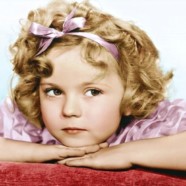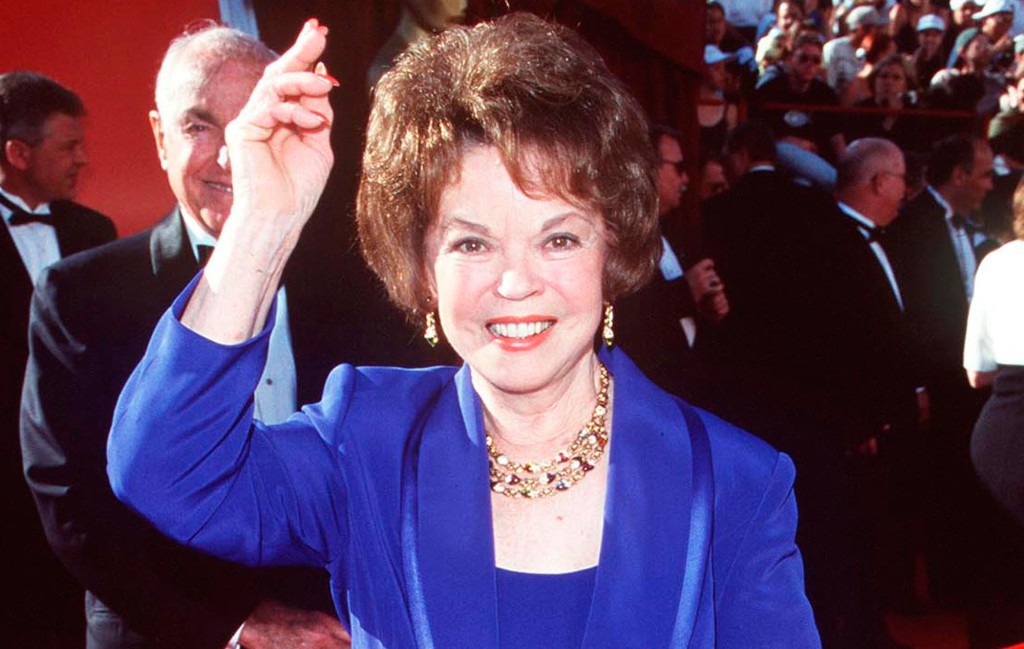Shirley Temple Dies at 85
Shirley Temple Black, who lifted America’s spirits as a bright-eyed, dimpled child movie star during the Great Depression and later became a U.S. diplomat, died late on Monday evening at the age of 85, a family spokeswoman said in a statement.
(Why are grown up peoples faces Wrinkled like a lot of prunes – Money money that’s what chases them Around like crazy loon’s – I think they make a big mistake – Wealth and happiness that counts – Are free to all in large amounts – There’s millions worth of golden sunbeams – That everybody can possess – All Gods children got success – Come and get your happiness # There’s billions worth of silver moonbeams – Enough for everyone I guess – What’s a million more or less – Come and get your happiness – Among the wildwood of your happy childhood – Where you were Jills and Jacks – In raggy britches there’s a lot of riches – On which you don’t pay any income tax – So get under their blue heaven – Away from trouble and distress – Just find Mother Nature’s address – And come and get your happiness)
Temple Black, who lured millions to the movies in the 1930s, “peacefully passed away” at her California home from natural causes at 10:57 p.m. local time (0657 GMT), surrounded by her family and caregivers, the statement said on Tuesday.
“We salute her for a life of remarkable achievements as an actor, as a diplomat, and most importantly as our beloved mother, grandmother, great-grandmother, and adored wife of fifty-five years,” the statement said.
Boasting a dimpled smile, bouncy curls and seemingly boundless happiness, Shirley Temple helped audiences escape with songs and dances that stressed optimism in a complicated world.
“I loved everything, I loved the bumps and the falls and the hard times, but it was just the greatest life,” she said.
Shirley Jane Temple was discovered at age three by a talent scout who noticed her in dancing school and cast her in a series of short films.
Her natural ease onscreen led to her first feature film for Fox Studios, Stand Up and Cheer. The studio did everything they could to maintain her innocence.
“Winfield Sheehan who was head of Fox Studio when I was little, told my mother that I should not go to the commissary at the studio because I would no longer be a little girl, I would become a little adult,” she recalled. “So he had a little bungalow built for me. There were rabbits and chickens and roosters that drove the writers next door crazy, and a swing. And that is where I had my lunch every day and had my studies.”
Temple Black astounded her colleagues with her ability to learn intricate songs and dances. She said her favorite dance partner was Bill Bojangles Robinson, one of Broadway’s biggest stars.
“We had some kind of chemistry between us,” she admitted. “We were the first interracial dancing couple on the screen. In fact, in the deep south of our country, if we were touching hands or holding hands, that would be cut out of the films for the south.
Now, they show them complete. But he was very sensitive, he was a good friend, he was funny, he treated me like a peer, one of his peers. And to dance with him, all I had to do was to hold hands and listen and I learned to tap by listening to this wonderful man,” she added.
By 1934, Shirley Temple was the most popular movie star in the country. And an industry was born. There were Shirley Temple dolls, dishes, dresses and lunch boxes. Celebrities visiting the studio often had their pictures taken with her. Some even became her friends, including Eleanor Roosevelt, the wife of then-U.S. President Franklin Roosevelt.
She received a special Academy Award in 1935 for her “outstanding contribution to screen entertainment.”
Life after movies
Her child career came to an end at age 12. She tried a few roles as a teenager – including opposite future president Ronald Reagan in That Hagen Girl.
Temple was only 17 in 1945 when she married for the first time to John Agar, who would eventually appear with her in two movies. Their five-year marriage produced a daughter.
Temple retired from acting in 1949 at the age of 21.
In 1950 she wed Charles Black in a marriage that lasted until his death in 2005. She and Black had two children.
Black’s interest in politics was sparked in the early ’50s when her husband was called back into the Navy to work in Washington.
She did volunteer work for the Republican Party while attempting to make a comeback with two short-lived TV series, Shirley Temple’s Storybook in 1959 and The Shirley Temple Theater a year later.
Seven years after that she ran unsuccessfully for Congress in California but stayed in politics, helping raise more than $2 million for Richard Nixon’s re-election campaign.
Temple launched her second career as a diplomat in 1969, when President Richard Nixon appointed her to the U.S. delegation to the United Nations.
In 1974, President Gerald Ford named her Ambassador to Ghana, a job she said in her 1988 autobiography was the “best job of her life.”
“It was a substantive job, I used everything I had ever learned in life in that job and the Ghanian people were very similar to we Americans,” Temple Black said. “They are outgoing, they have a good sense of humor, and they are industrious. And we just got along beautifully.”
Temple Black also served as White House Chief of Protocol, and from 1989 -1992 was Ambassador to Czechoslovakia.
As Ambassador she was soft-spoken and earnest, out to disprove concerns that her previous career made her a diplomatic lightweight.
“I have no trouble being taken seriously as a woman and a diplomat here,” Black said after her appointment as U.S. ambassador to Ghana in 1974. “My only problems have been with Americans who, in the beginning, refused to believe I had grown up since my movies.”
Sometimes the public found it hard to accept her in diplomatic roles. But in 1989 she pointed out her 20 years in public service were more than the 19 she spent in Hollywood.
In 1972, Black was diagnosed with breast cancer and underwent a mastectomy. She publicly discussed her surgery to educate women about the disease.
In 1998 Temple Black was a Kennedy Center Honors recipient, recognizing her as the most successful child entertainer of the 20th century. And her movies live on.
Some information for this report provided by Reuters




